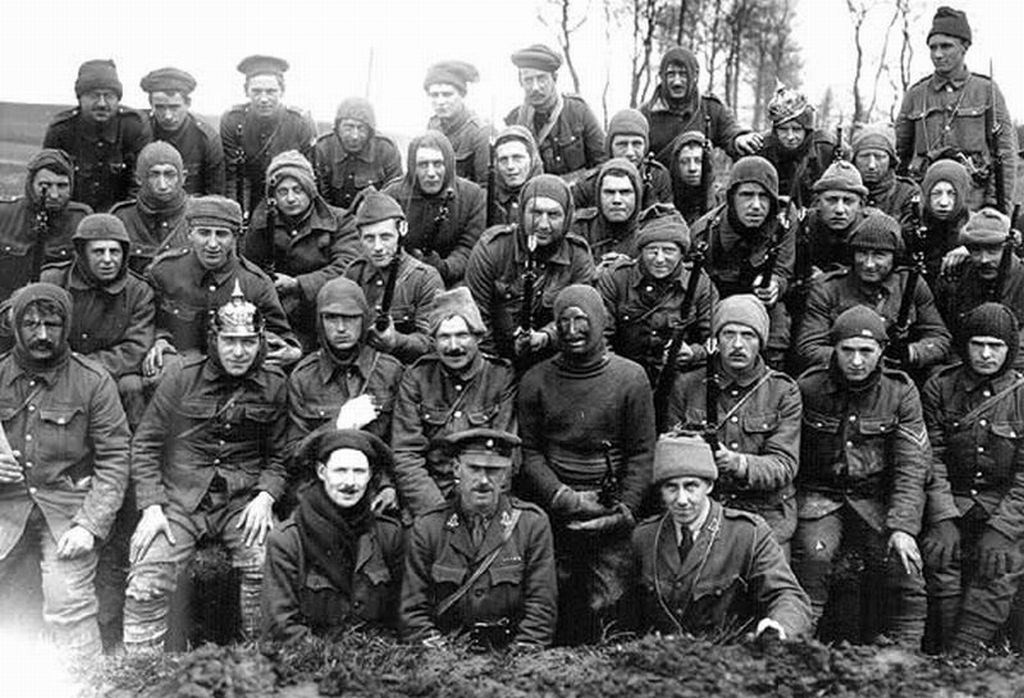Cap Comforter on:
[Wikipedia]
[Google]
[Amazon]
A capcomforter is a form of woollen military
 Cap comforters were worn during the First World War as a warm alternative to the service dress cap, as the fabric could be pulled low over the ears in the cold winter trenches. Their casual and non-rigid silhouette made them an ideal item for night time trench raids.
Cap comforters were worn during the First World War as a warm alternative to the service dress cap, as the fabric could be pulled low over the ears in the cold winter trenches. Their casual and non-rigid silhouette made them an ideal item for night time trench raids.
 The British commandos were an international force recruited from across various
The British commandos were an international force recruited from across various
headgear
Headgear, headwear, or headdress is the name given to any element of clothing which is worn on one's head, including hats, helmets, turbans and many other types. Headgear is worn for many purposes, including protection against the elements, de ...
originating in the British Army.
It is a cylinder of knitted wool, similar to a short scarf, that is typically fitted over the head and fashioned into a hat. It can be worn comfortably underneath a Brodie helmet
The Brodie helmet is a steel combat helmet designed and patented in London in 1915 by Latvian inventor John Leopold Brodie ( lv, Leopolds Janno Braude). A modified form of it became the Helmet, Steel, Mark I in Britain and the M1917 Helmet in ...
, and is often sewn shut at one or both ends. The cap comforter bears no insignia, and can be easily stowed without being creased.
History
Cap comforters were introduced in the late 19th century as informal working headdress for British soldiers performing manual labour at camp, and as a comfortable undress cap on active service.First World War
 Cap comforters were worn during the First World War as a warm alternative to the service dress cap, as the fabric could be pulled low over the ears in the cold winter trenches. Their casual and non-rigid silhouette made them an ideal item for night time trench raids.
Cap comforters were worn during the First World War as a warm alternative to the service dress cap, as the fabric could be pulled low over the ears in the cold winter trenches. Their casual and non-rigid silhouette made them an ideal item for night time trench raids.
Second World War
In the Second World War, soldiers in many British and Canadian regiments wore cap comforters during field training and while carrying out manual tasks.Commandos
Allied
An alliance is a relationship among people, groups, or states that have joined together for mutual benefit or to achieve some common purpose, whether or not explicit agreement has been worked out among them. Members of an alliance are called ...
units, many with distinctive headdresses. As a solution to this lack of uniformity, commando units adopted their own practical headgear. No.1Commando chose the green beret in imitation of the Royal Armoured Corps, whereas No.2 and No.9 adopted the Scottish
Scottish usually refers to something of, from, or related to Scotland, including:
*Scottish Gaelic, a Celtic Goidelic language of the Indo-European language family native to Scotland
*Scottish English
*Scottish national identity, the Scottish ide ...
tam o' shanter. Other units, including No.4Commando (and US Army Rangers attached during the Dieppe Raid
Operation Jubilee or the Dieppe Raid (19 August 1942) was an Allied amphibious attack on the German-occupied port of Dieppe in northern France, during the Second World War. Over 6,050 infantry, predominantly Canadian, supported by a regiment o ...
), adopted the cap comforter as their headdress, because it had no prior affiliation with a nation or regiment.
In autumn 1942, the War Office approved the green beret as the official commando headgear, though the cap comforter continued to be worn, already synonymous with the apparel of the commandos.
Post-war
Canada
Canada had issued a number of knit headgear items since 1945, though the term "cap comforter" has been replaced with "toque."United Kingdom
The British Army has stopped issuing cap comforters, replacing them instead with headovers - similar items based on '' Wehrmacht'' toques. Headovers are not sewn at the ends, and so can be worn like balaclavas. However, cap comforters are still used by units with links to the original commandos. Troops undertaking theRoyal Marines
The Corps of Royal Marines (RM), also known as the Royal Marines Commandos, are the UK's special operations capable commando force, amphibious light infantry and also one of the five fighting arms of the Royal Navy. The Corps of Royal Marine ...
or All Arms Commando Courses at CTCRM
Commando Training Centre Royal Marines (CTCRM) is the principal military training centre for the Royal Marines. It is situated near the villages of Lympstone and Exton, between the city of Exeter, and the town of Exmouth in Devon, England.
Histo ...
still wear them after the pass-in tests.
Netherlands
Dutch ''Korps Commandotroepen
The (KCT) ( en, Commando Corps) is the elite special forces unit of the Royal Netherlands Army. The KCT traces its origins to the Second World War with the founding of No. 2 (Dutch) Troop, and the founding of the during the Indonesian War of I ...
'' also wear the headgear until they pass their selection course, after which they are qualified to wear a green beret.
References
{{Hats 20th-century fashion Commandos (United Kingdom) British Army in World War II Caps Hats Headgear History of clothing (Western fashion) Military uniforms